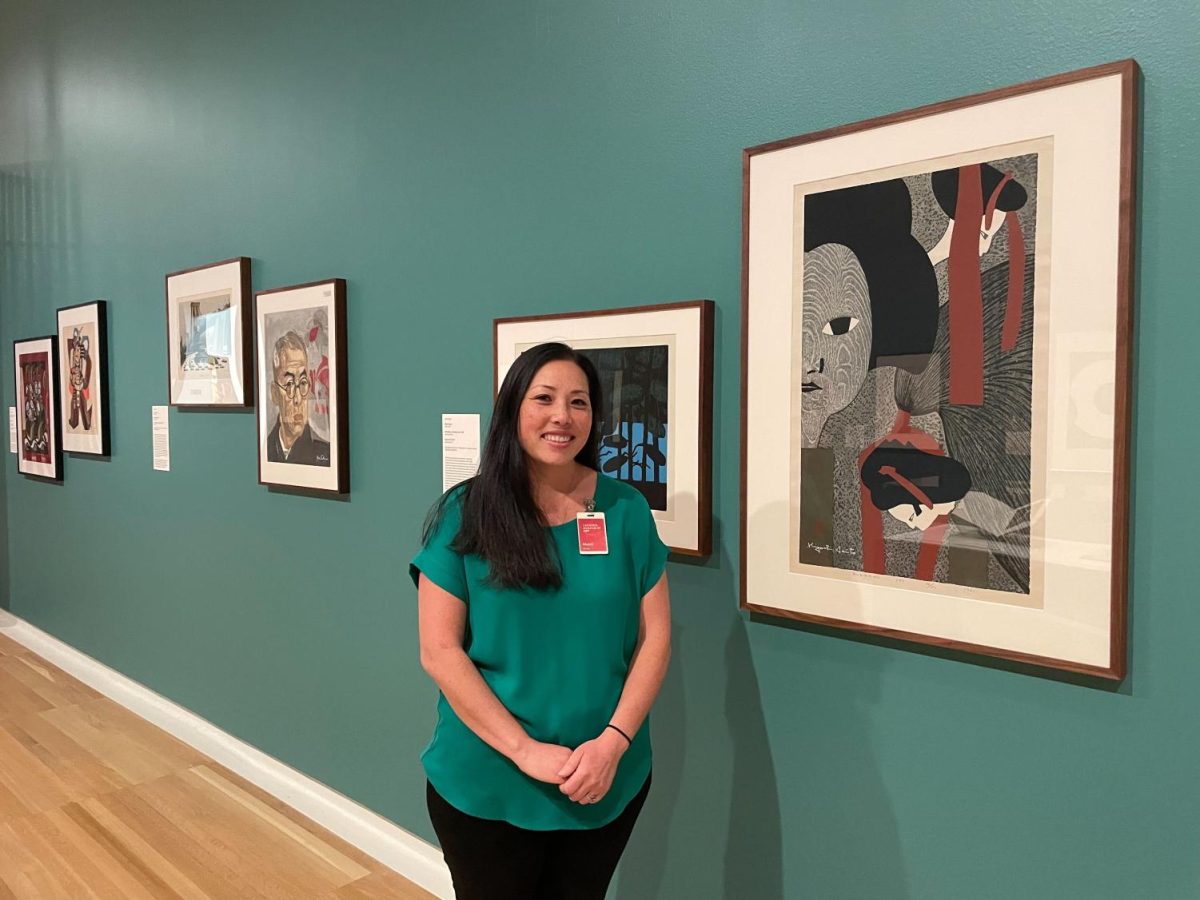According to Art Curator Akemi May, printmaking as a medium is a longstanding tradition within Japanese culture.
“It even dates back to very early Buddhist prints. Japan has had a long history of woodblock printmaking, it was an important part of their practice, certainly in the Edo period,” May said. “Those are considered so masterful within the history of art in general and widely recognized as being some of the greatest forms of woodblock printmaking.”
The Carnegie Museum is debuting a new exhibit to feature the work of Japanese printmakers from 1912 to 2022. The exhibit opened on June 24, 2023, and will be displayed in Scaife Gallery One until May 12, 2024. In that time, there will be three rotations of various Japanese prints.
May thinks it’s ‘nice’ to see visitors enjoy the prints as much as she does.
“My last exhibition was one that closed a week early because of the pandemic,” May said. “I’m really looking forward to visitors enjoying it as much as I am, because so far, it’s just been Emily Mirales, our curatorial assistant and I, in the print room, looking at these things for the last couple of years. And so now we’re really excited to show people.”
Emily Mirales, curatorial assistant at the Carnegie, thinks that Yoshida Hiroshi’s “Evening in Pittsburgh” is a highlight of the exhibit.
“There are so many incredible pieces, but one that stands out is Yoshida Hiroshi’s Evening in Pittsburgh (Pittsubaagu no yū), 1928,” Mirales said. “Pittsburgh locals will recognize the downtown skyline along the Allegheny River, but the bridge Yoshida depicted has since been replaced by the Andy Warhol Bridge. Yoshida’s Pittsburgh print is the only artwork presented in all three rotations of the exhibition — thanks to lenders to the exhibition, we have access to three versions of this iconic print that speaks to the global connections made by artists.”
One museumgoer described the exhibit as ‘otherworldly.’
“I’ve seen some of these works reproduced online, but seeing them in person was quite perplexing,” he said. “Many of the images had an otherworldly quality, as if they were jumping off the page.
Mirales said she enjoyed seeing the variation between different artists and their respective mediums with each print.
“I love how much there is to look at, and how much there is to discover in the individual prints,” Mirales said. “Seeing these prints up close offers the chance to see the different techniques that artists employed, from utilizing natural woodgrains to blind printing the paper to add texture.
May also noted the variation of materials in this exhibit, because the most common printmaking medium is woodblock printmaking.
“We actually have a lot of work that’s done in etching and in mezzotint and silkscreen, as the print makers became more familiar with these other mediums, they were sort of exploring a little bit more and going to art school,” May said.
As an art medium, May feels that printmaking is ‘accessible’ because one work of printmaking can have a wide reach.
“I think that to some extent the technical process is very mysterious for many, but the fact that it is a multiple that can be shared fairly widely” May said. The fact that it is a multiple allows for it to be, in a way, more democratic or form opinion and really allows for the dissemination of the artist’s vision.”
The museum goer said he appreciated the educational feel of the exhibit, which gave him a better understanding of the art around him.
“I enjoyed the exhibit because it gave me the opportunity to look at some beautiful works of art, while also giving me some historical context,” he said. “The inclusion of some modern works shows how the influence from the past shapes the present.”
Mirales thinks that people should see these prints while they are able to be displayed because of the time constraints that exist when working with paper art.
“This almost year-long exhibition is a fantastic opportunity for students and the Pittsburgh community to get to know these amazing prints,” Mirales said. “Since works on paper are sensitive to light, the amount of time they can be on view is limited. To properly conserve these works for years to come, this part of the collection is not frequently on view. I really think coming to see these prints at the museum is a worthwhile experience, as pictures alone don’t do them justice.”
The museum goer also encouraged anyone interested to go by in person to look.
“It’s wholly worthwhile to see this exhibit in person that I don’t think can be reproduced electronically,” he said. “The scenes of the places were able to transport me away and I’d never felt that way from any kind of art before.”
May thinks this exhibit is ‘a special occasion’ because the Carnegie Museum has a “really famous” collection of Japanese prints.
“I think that there is great interest within the city, from Japanese friends,” May said. “And we’re really happy to be sort of celebrating this particular facet of the artistic tradition of Japan at the moment.”



